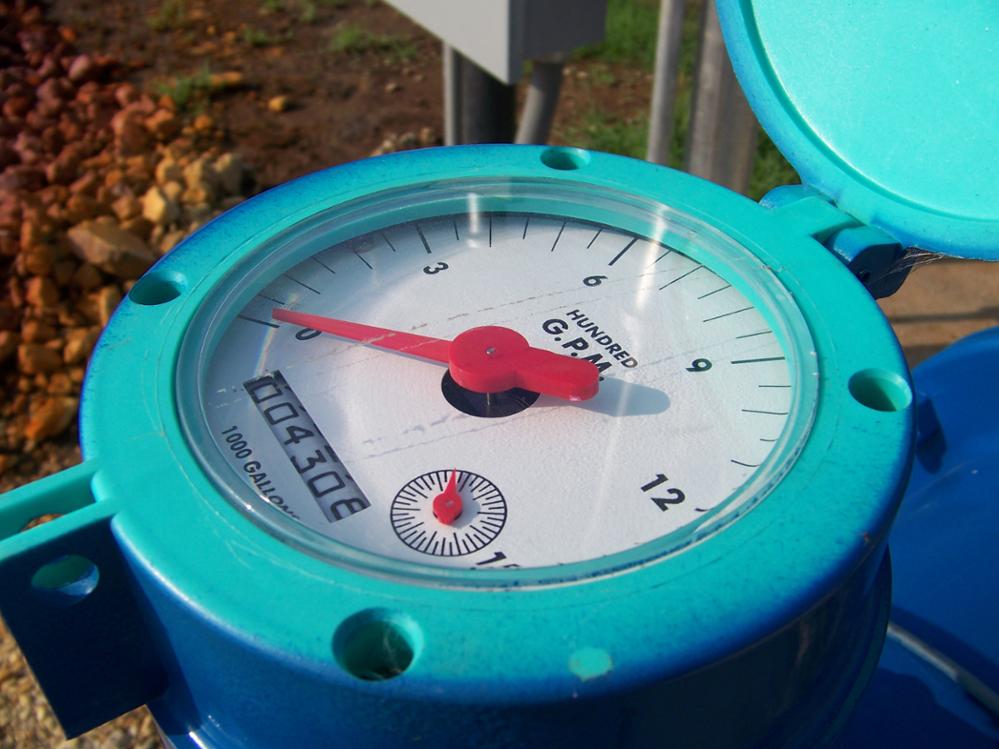Water use surveys inform water planning and research Posted on March 7, 2022

As population and water demand increase in our state, so does the need to accurately gauge how much water is being utilized so we can ensure we’ll have enough supplies in times of drought. To support that mission, the Texas Water Development Board (TWDB) conducts an annual water use survey, which provides essential data about current water use and helps project future demand on water resources.
According to Yun Cho, the TWDB’s water use and planning data manager, the survey is critical to understanding how our state’s water resources are being utilized.
“The water use survey collects the volume of both ground and surface water used, the source of the water, water sales, reuse, and other pertinent data from public water systems and large industrial users,” said Cho. “The data provides an important source of information in helping guide water supply studies, as well as regional and state water planning, that are dependent upon the accuracy and completeness of the information water users provide.”
The TWDB began collecting water use surveys in 1955, and they’re due to the agency every year by March 1. The agency solicits two types of water use surveys, collecting roughly 4,500 municipal surveys and 2,500 industrial surveys that capture the state's primary water using entities.
Texas State Law requires completed water use surveys for any entity that has received the survey. Municipal water use surveys are required of all active public water systems that are community water system types, as determined by the Texas Commission on Environmental Quality. Other water systems and commercial/institutional facilities may also be surveyed, particularly if groundwater is pumped or a significant volume of water is being used. Manufacturing and mining water users of more than 10 million gallons of water per year or those that use a significant volume of water for the industrial sector in a particular area of the state are required to submit an industrial water use survey. Surveys are also required of all steam-electric power-generating plants regardless of volume.
State and regional water planning
“Water use survey data is specifically used to develop population and water demand projections in the regional and state water planning process,” said Cho. “Future water demand projections are based on historical water use estimates and gallons per use per person data.”
Additionally, regional water planning groups and their consultants rely on historical water use data to evaluate their future supply and projections data.
Groundwater modeling
To accurately represent the groundwater contained in Texas' underground aquifers, the TWDB develops groundwater availability models that are used to simulate and predict aquifer conditions. Groundwater availability models and the historical water use and pumping data, among other types of information, are used by groundwater conservation districts in their groundwater management plans and by groundwater management areas to develop desired future conditions. Groundwater modeling is based largely on the estimated historical pumping data, which comes from the water use surveys.
National Water-Use Information Program
Texas’ water use survey data also contributes to the National Water-Use Information Program facilitated by the U.S. Geological Survey (USGS). The program documents trends in water use nationwide; analyzes water use at local, state, and national levels; and publishes water use data reports. The USGS also uses the TWDB’s water pumping data to develop groundwater flow models.
Research
Researchers at universities, agencies, and other entities rely on survey data for various research topics, including estimating seasonal water use, studying drought, examining water use, performing geographic analysis of water sources, analyzing the socioeconomic impacts of water use, and studying conservation. In general, researchers use historical water use and pumping data to understand water use trends, characteristics, and geographic distribution, as well as identify areas with issues related to climate, hydrogeologic character, and projected growth.
Public data access and utility training
The TWDB recently launched a new, interactive data dashboard that displays historical water use surveys and data estimates by public water systems in Texas. The Historical Water Use Survey Data for Public Water Systems website allows anyone to view water use in a specific region and see how it has changed over time. Site visitors can see historical water intake and sales volumes for individual public water systems, as well as categorical water use for single-family, multi-family, institutional, and industrial categories. Additional historical water use summary reports can be found on this website.
The TWDB hosts workshops to provide water utility staff the tools to complete their water use survey, conduct a comprehensive water loss audit, and enact water loss and water conservation strategies. The workshops are provided at no cost to participants and approved for four hours of continuing education for licensed water operators through the Texas Commission on Environmental Quality. Upcoming workshops are scheduled for March 9 and April 12. For public water systems, the reporting of the water use survey, water loss audit, and annual water conservation report is consolidated into an online application that unifies reporting.
Additional information about the water use survey is available on the TWDB website.
This article is posted in Water Planning / Water Supply / Water Data .